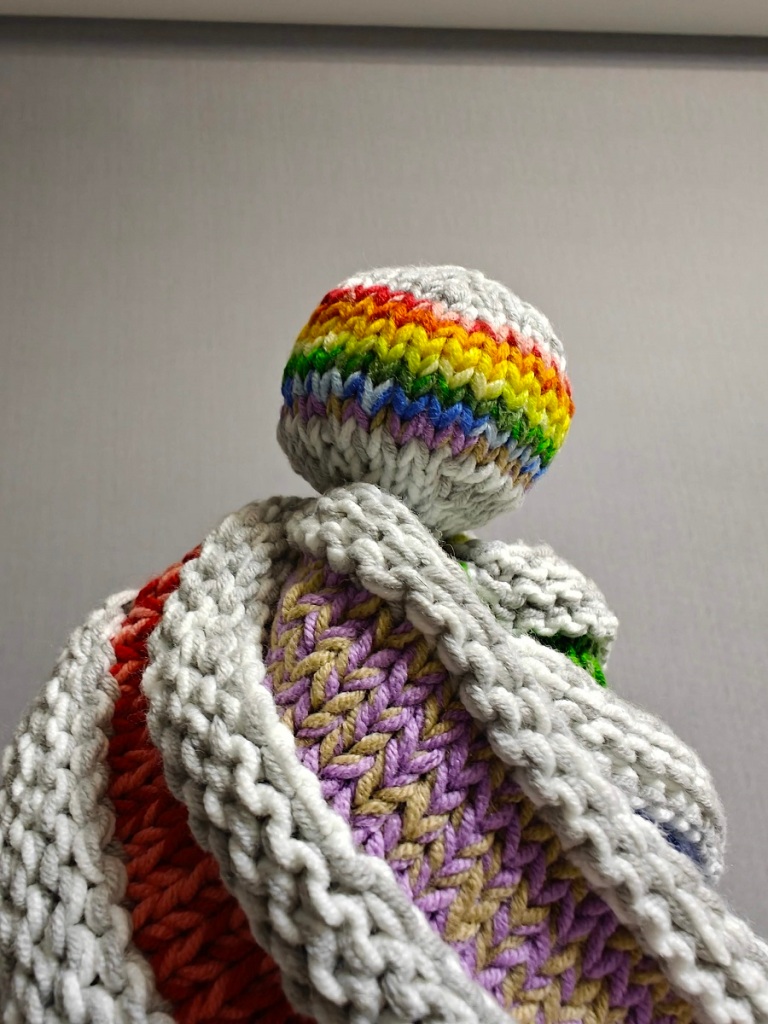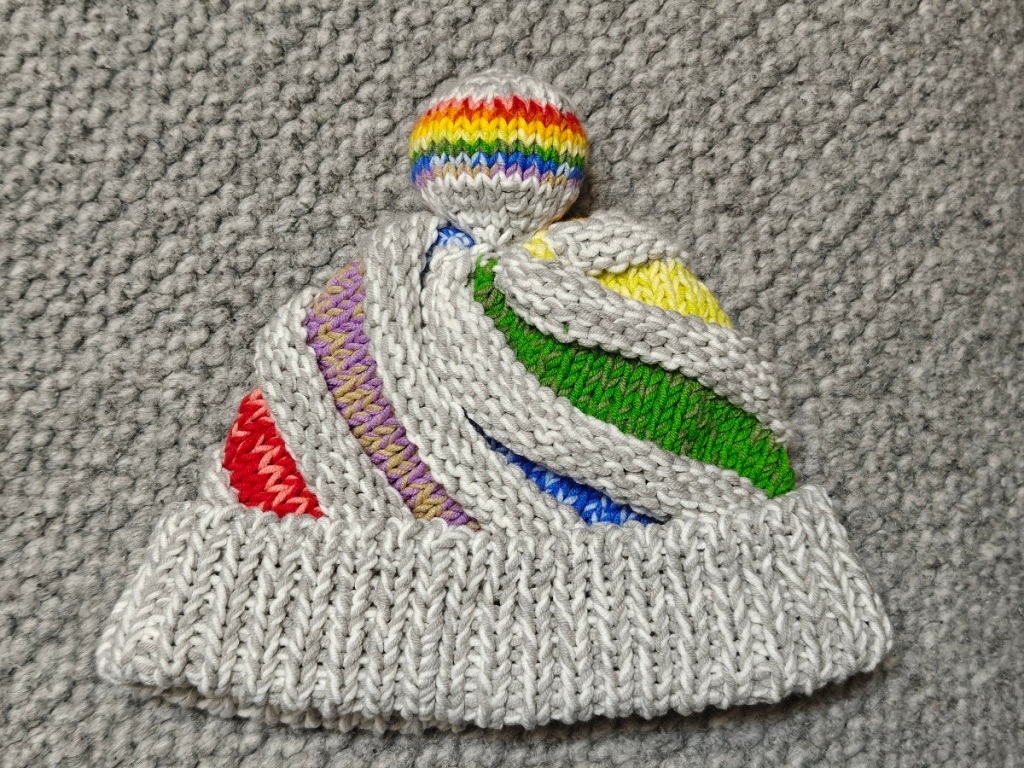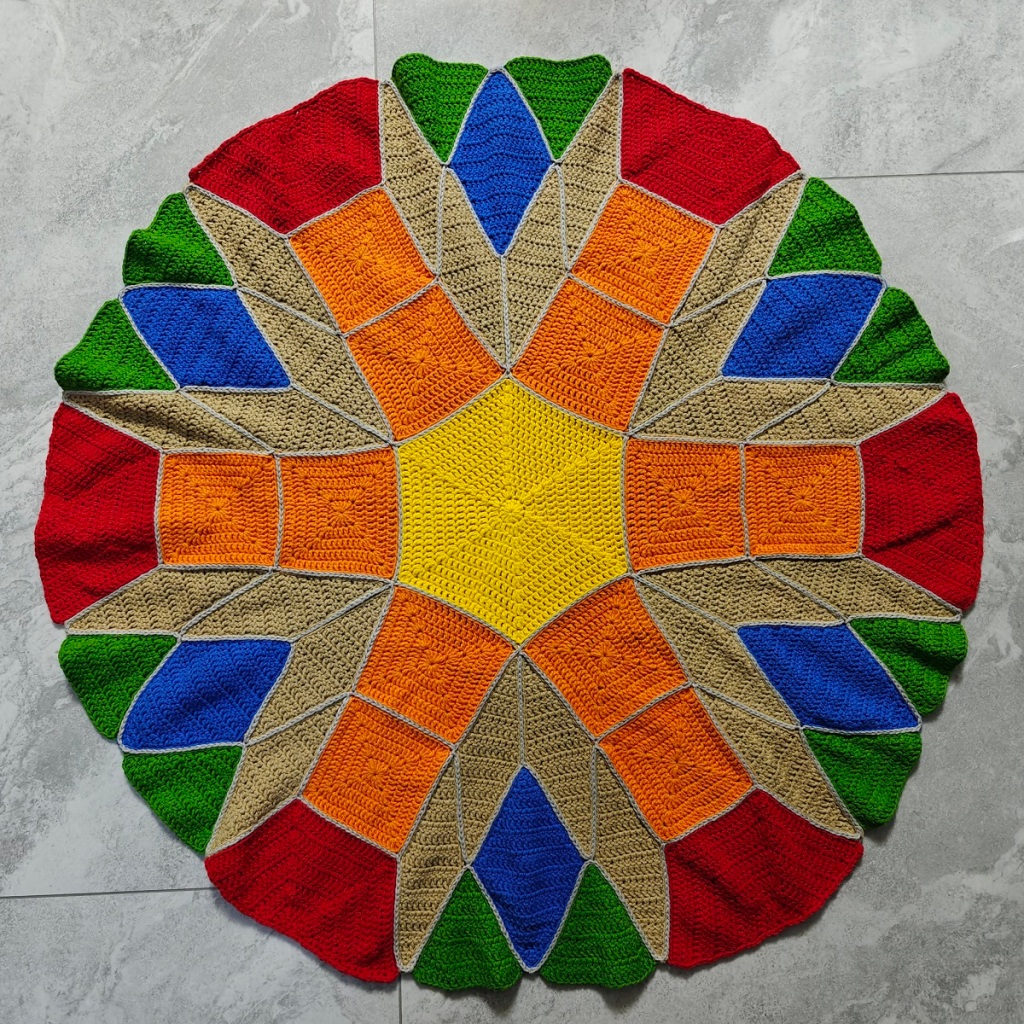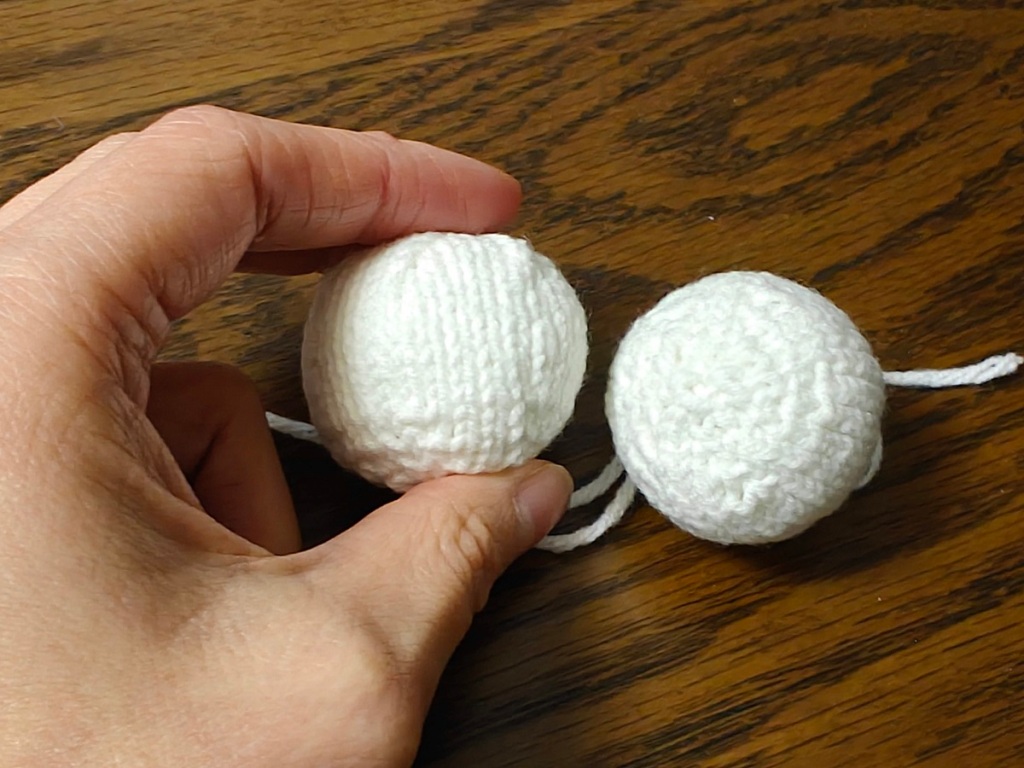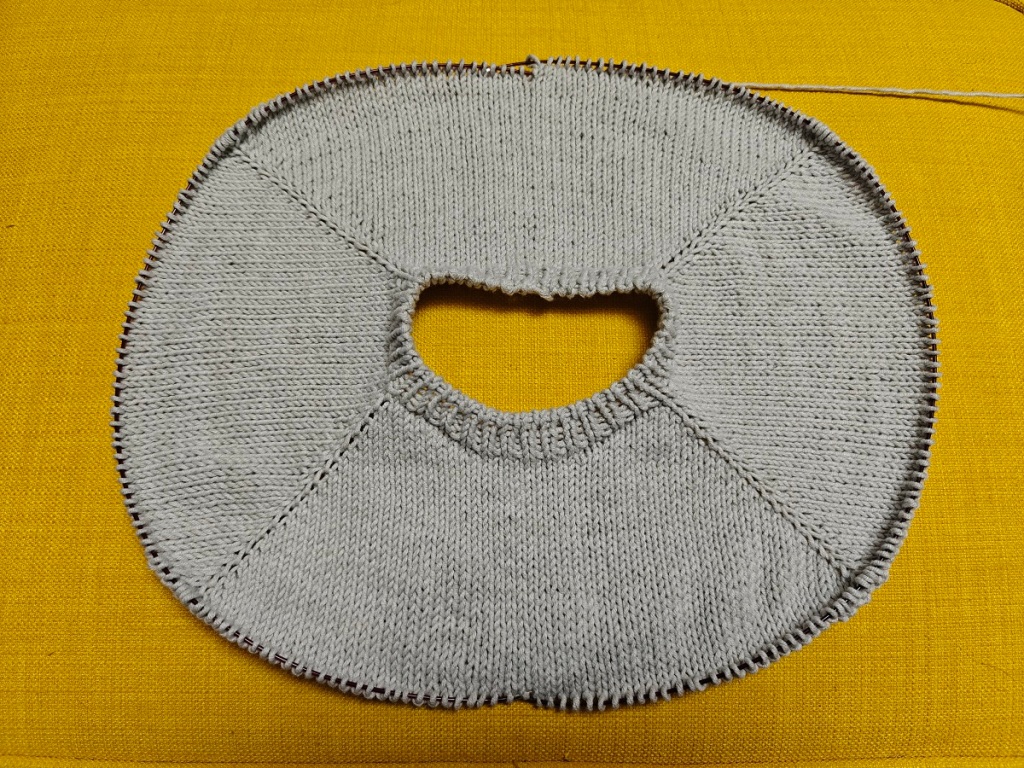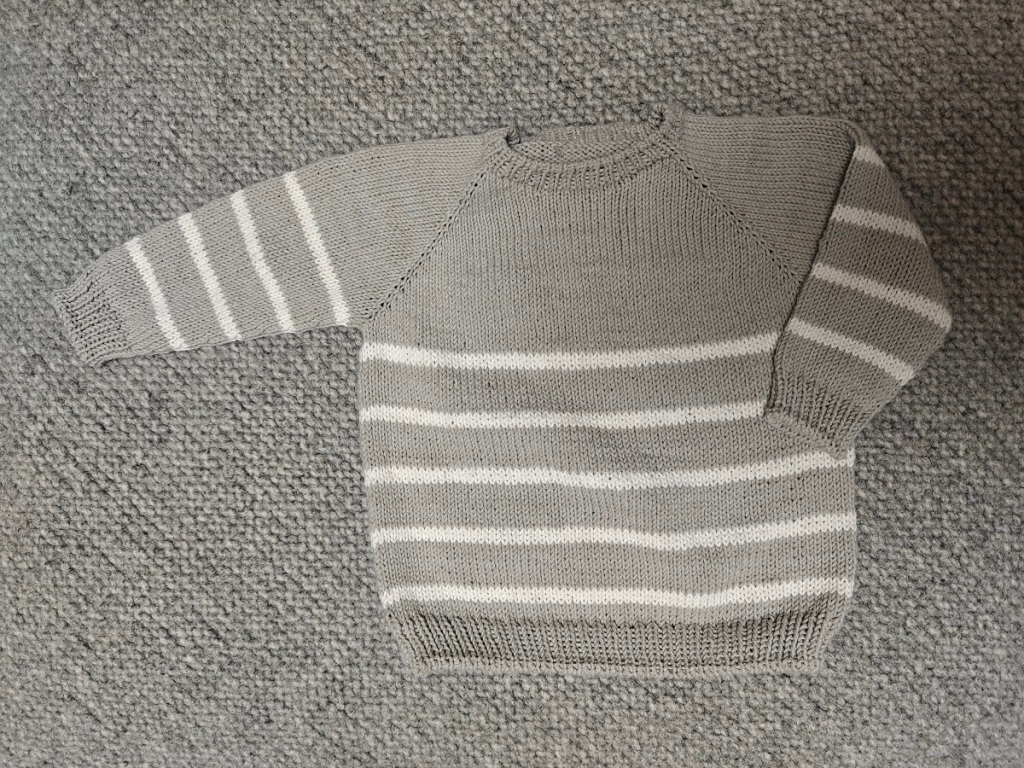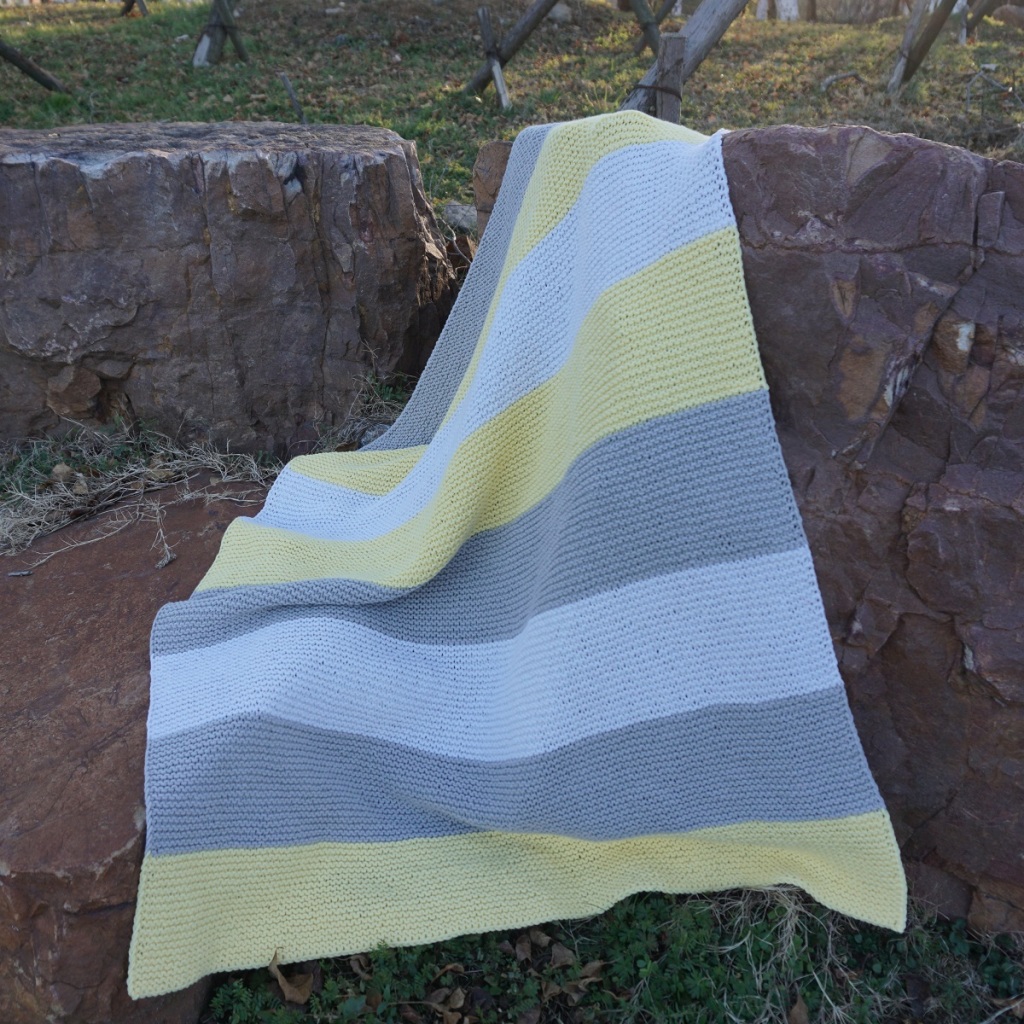Milk Tea Hat is a simple beanie with some easy colorwork. The brim is made of a modified broken rib stitch using slip stitches to add some color and the main body includes garter ridges in a contrasting color. You can purchase an inexpensive PDF from my Ravelry store here, which contains instructions for eight sizes from preemie to adult. The instructions for the preemie size are provided here for free.

Skill Level:
Easy
Materials:
• US 4 (3.5 mm) DPNs and/or circular needles
• Sport yarn in 4 colors (see chart on page 2 for amounts)
• 8 stitch markers
Gauge:
24 sts x 32 rows to 4” (10 cm) in stockinette after blocking
* Be sure to check your gauge
Size:
Hat circumference for preemie size: 10” (25 cm)
Other sizes available on the PDF are: Newborn: 12” (30 cm); 3-6 Months: 14” (36 cm); 6-12 Months: 16” (41 cm); Toddler: 18” (46 cm); Child: 20” (51 cm); Teen: 21.3” (53 cm); Adult: 22.7” (58 cm)
* Worn with 1-2” (3-5 cm) of negative ease
Size Chart:
See below for the finished size of the hat compared to head size.
| Age | Head Circumference | Hat Circumference | Hat Length |
| Preemie | 11-12” (28-30 cm) | 10” (25 cm) | 4” (10 cm) |
| Newborn | 13-15” (33-38 cm) | 12” (30 cm) | 5” (13 cm) |
| 3-6 Months | 15-17” (38-43 cm) | 14” (36 cm) | 5.5” (14 cm) |
| 6-12 Months | 16-19” (41-48 cm) | 16” (41 cm) | 6.5” (17 cm) |
| Toddler | 18-20” (46-50 cm) | 18” (46 cm) | 7” (18 cm) |
| Child | 19-21” (48-53 cm) | 20” (51 cm) | 7.5” (19 cm) |
| Teen | 21-22” (53-56 cm) | 21.3” (54 cm) | 8” (20 cm) |
| Adult | 23-24” (58-61 cm) | 22.7” (58 cm) | 8.5” (22 cm) |
Yarn Amounts:
See below for approximate yardage of each color needed.
| Size | MC1 | CC1 | MC2 | CC2 |
| Preemie | 11 yd (10 m) | < 5 yd (5 m) | 34 yd (31 m) | 7 yd (6 m) |
| Newborn | 13 yd (12 m) | < 5 yd (5 m) | 46 yd (42 m) | 11 yd (10 m) |
| 3-6 Months | 15 yd (14 m) | < 5 yd (5 m) | 59 yd (54 m) | 16 yd (14 m) |
| 6-12 Months | 17 yd (16 m) | 5 yd (5 m) | 74 yd (68 m) | 22 yd (20 m) |
| Toddler | 19 yd (17 m) | 6 yd (5 m) | 90 yd (82 m) | 28 yd (26 m) |
| Child | 22 yd (20 m) | 7 yd (6 m) | 100 yd (91 m) | 32 yd (29 m) |
| Teen | 23 yd (21 m) | 8 yd (7 m) | 115 yd (105 m) | 38 yd (35 m) |
| Adult | 25 yd (23 m) | 8 yd (7 m) | 131 yd (120 m) | 46 yd (42 m) |
Abbreviations:
k = knit
p = purl
sl1p = slip 1 purlwise
wyib = with yarn in back
k2tog = knit 2 together
st(s) = stitch(es)
rep = repeat
rnd = round
CO = cast on
BO = bind off
MC = main color
CC = contrasting color
Notes:
When working with two colors, be sure to twist the strands of yarn when changing colors.
The ribbing for the brim is not very stretchy. You can change to smaller needle if you want a stretchier brim.
Instructions:
Brim:
With MC1, CO 60 sts. Join in the rnd and place marker.
If the CO and rnd 1 color change is tricky, you can CO an extra st and then join the first and last sts with k2tog in MC1. Count it as the first sl1p in rnd 1.
Rnd 1: With CC1, *sl1p wyib, k1, rep from * to end.
Rnd 2: With MC1, *k1, p1, rep from * to end.
Rnd 3: With MC1, k all.
Rep rnds 1-3 for a total of 4 times and then rnds 1-2 once more.
Body:
Change to MC2, and work in stockinette (k all) for 6 rnds.
Rnd 7: Change to CC2, k all.
Rnd 8: With CC2, p all.
Rnd 9: Change to MC2, k all.
Rnd 10: With MC2, k all.
Rep rnds 7-10 for a total of 3 times.
Crown:
Continue with only MC2.
Setup Rnd: k all, placing a marker every 7 sts. At the same time, work the setup row as follows: *k13, k2tog, rep from * to end. 56 sts
Rnd 1: *k to 2 sts before marker, k2tog, slip marker, rep from * to end.
Rnd 2: k all.
Rep rnds 1-2 for a total of 4 times.
Rep only rnd 1 2 more times.
Finish:
Cut yarn, draw tail through remaining 8 sts. Weave in ends and block.

You may make and sell products from my pattern but please credit me and/or link back to my post and use your own photos.
Have fun with it!


